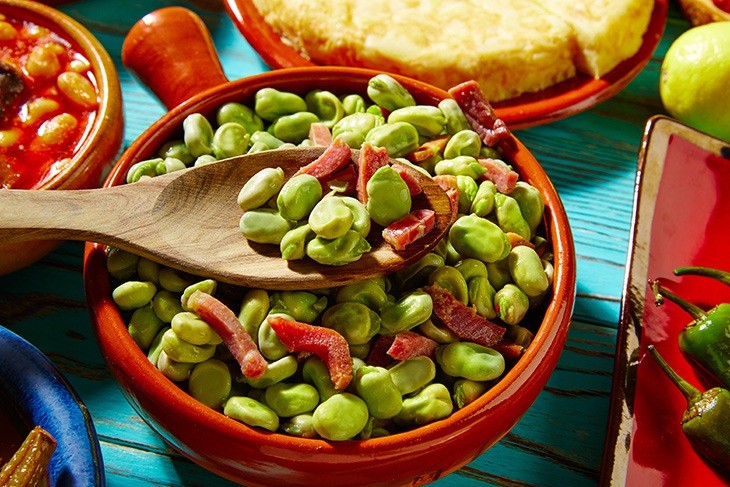
Lima beans are a delicacy known for their savory buttery taste and unique flavor. In other circles, the wholesome legumes are also known as Madagascar beans, wax beans, or as their taste suggests, butter beans. They are a common addition to various soup dishes, stews, and are an excellent substitute for peas on meat dishes. The tasty beans can also be eaten on their own as a healthy side dish.
While there are numerous lima beans recipes that you can try, this delicacy requires a special type of preparation. This is because when raw, the beans contain compounds of cyanide that can be fatally poisonous when ingested. This is the primary reason why the proper preparation of lima beans tends to be time-consuming.
Although you can choose to soak them overnight in cold water or go for a short hot soak before boiling them, it is healthier to give them that cold overnight soak. A long cold soak guarantees you that all the beans will be properly hydrated and cook evenly through. Long-soaked beans will also take less time to cook and will be a lot kinder to your digestive system.
Step-by-Step Process of How to Prepare and Cook Lima Beans
You will need:
- Lima beans (as much as you need)
- Water
- Bowl
- White tray/plate
- Spoon
- Strainer/Colander
- Heavy pot/Saucepan
Step 1
Pour the beans onto the white plate or tray spread them out. Prepare the beans by picking out bad, wrinkled, broken, dirty, or discolored lima beans. If your beans were sourced from a farmers’ market or straight from the farm, you might also find that there are dirt and debris you need to pick out. Use the bowl to place the sorted beans so as to avoid needless repetition. If necessary, however, you can repeat the process to ensure that every bad bean and all unwanted objects have been eliminated. Make sure you’re left with nothing but clean, healthy lima beans before proceeding to the next step.
Step 2
Once properly sorted, place all the beans in the bowl and add three measurements of water for every measurement of lima beans. This means that if you’re preparing one cup of lima beans, you should add three cups of water. Remove all the beans that float and throw them away as well. Once done, allow the beans to soak through the night. You will find that all the water is absorbed and that the beans are twice as big the following day.
Step 3
Rinse the lima beans thoroughly and as many times as you need to. Ensure that by the time you’re done with them, the water runs clear. You can use the strainer to ensure that the beans are completely dry before proceeding to the next step.
Step 4
The lima beans are now ready to be cooked. Pour them into your best stainless cookware and add some freshwater. Ensure that the water covers the beans completely. In fact, the water level should be a minimum of 1 inch above the level of the lima beans.
Turn on the stove/cooker to medium-high heat and cook the beans to a boil. This should not take too long but the time taken may vary depending on the thickness of your pot, a number of beans being cooked, and the temperature you’re cooking them at. Ensure that the lima beans have begun to boil before moving on to step 5.
Step 5
Once the beans have reached a boil, lower the heat to a simmer and let them cook uncovered for 45 minutes to 1 hour. Ideally, you’d want to wait until the beans are tender and if you’re cooking for more people, it may take longer than an hour. Meanwhile, keep stirring the pot to prevent the beans from sticking to the sides and the bottom while they simmer in the low heat. Once tender, you can take them off the heat and check how well they’ve cooked.
Step 6
Using a fork or your fingers (if the beans are not too hot), pick one bean and mash it. If properly done, it should mash easily. If it doesn’t, you can pop them back onto the stove for a few minutes. Once properly cooked, pour them into the strainer and dry them completely. Your beans are now ready to be served or to be used as an ingredient in other dishes.
Cooking lima beans to perfection requires patience and rapt attention. However, once they’re done, the buttery-tasting beans are totally worth all the effort. Remember to always cook your pre-soaked beans in freshwater as this reduces the presence of oligosaccharides, which cause gas and bloating, and also reduces complex sugars that might trouble your digestive system.
About the Author
Hi, I am Emily Mathews. I’m the founder of Cookingchew.com. I grew up in a small town in Tennessee, where I learned how to cook fabulous local dishes from my Mother. I have 3 children and they enable me to cook from my heart every day. I am also passionately interested in creating globally inspired food with locally grown ingredients.




